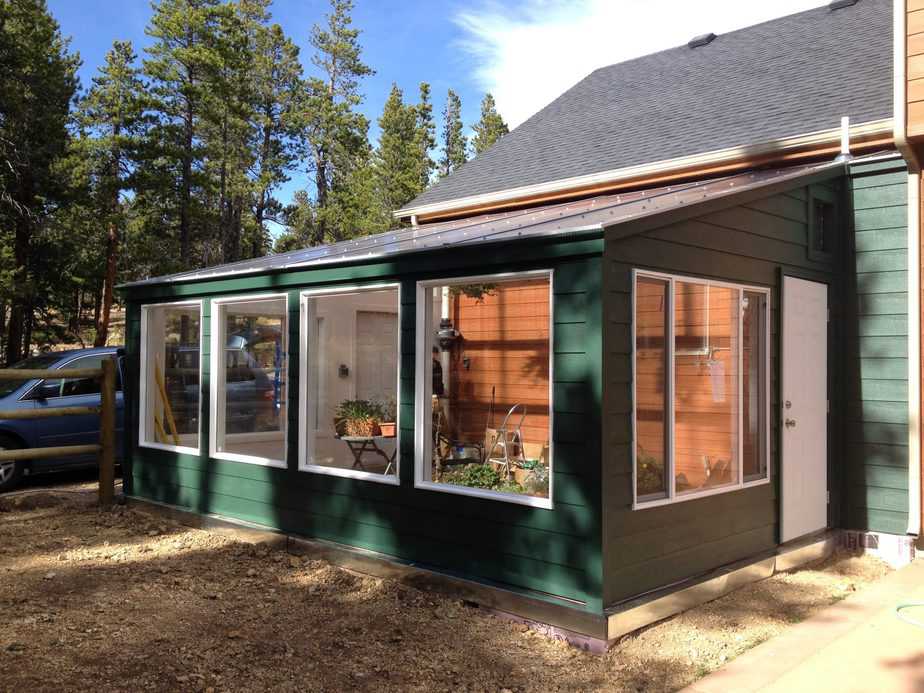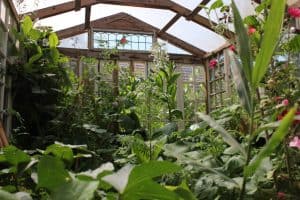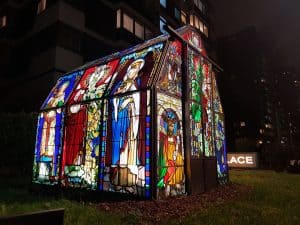Imagine enjoying delicious homegrown treats like citrus, tomatoes, and avocados year-round. Now imagine all this without any use of fossil fuels. And now add a layer of cold winter winds and even a flurry of snow into the mix.
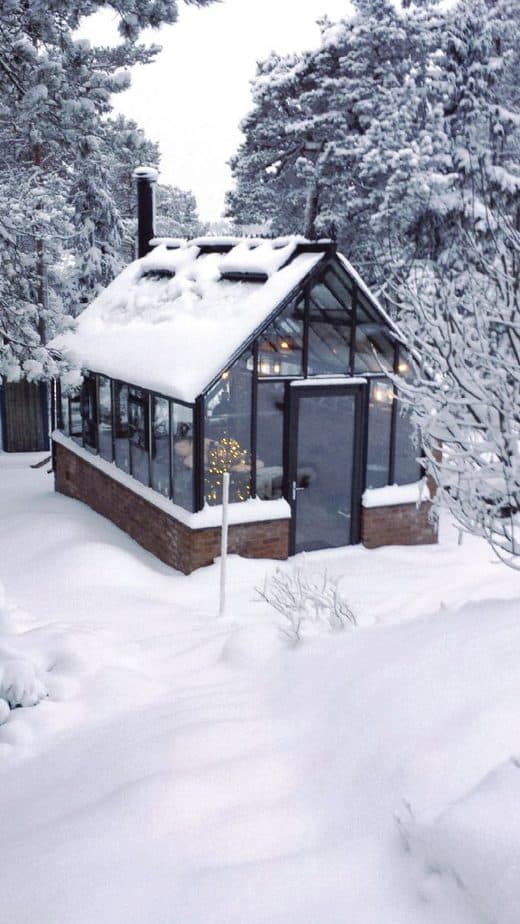
Does it sound impossible? With solar for greenhouses, it’s well within reach.
But wait—aren’t all greenhouses powered by “solar”?
Greenhouses – A Natural Solar Panel
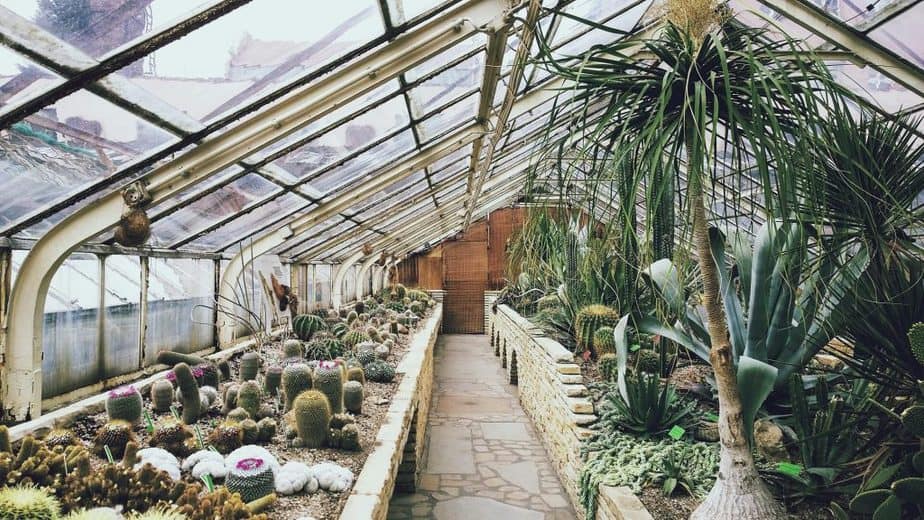
Here’s how a basic greenhouse works, even without electricity:
The glass or plastic in a greenhouse’s walls and roof let in light—solar energy. That light gets absorbed by the soil and plants inside, then converted into heat energy as plants do their thing.
Some types of greenhouses do this process better than others though. If you haven’t yet raised your greenhouse, then consider giving this comparison of greenhouse types a read.
A greenhouse warms up because the heat energy can’t escape through the glass or plastic exterior. Why? Heat waves are longer than light waves. Science!
Even at night, plants are still creating carbon dioxide, which helps keep the atmosphere of a greenhouse warm when the sun isn’t shining. Compost in the greenhouse is also constantly putting out carbon dioxide and therefore heat—remember that even after you remove it from your compost bin, microbes and worms and bugs are still digesting the organic material.
But often the “natural” or passive heat of a traditional greenhouse just isn’t enough to keep plants alive in harsh winters. Winter demands an artificial heating system and chances are you’re using fossil-fuel-based electricity to heat your greenhouse.
Ready to break away from gas or coal and create a totally renewable all-year growing paradise?
The Solar Difference
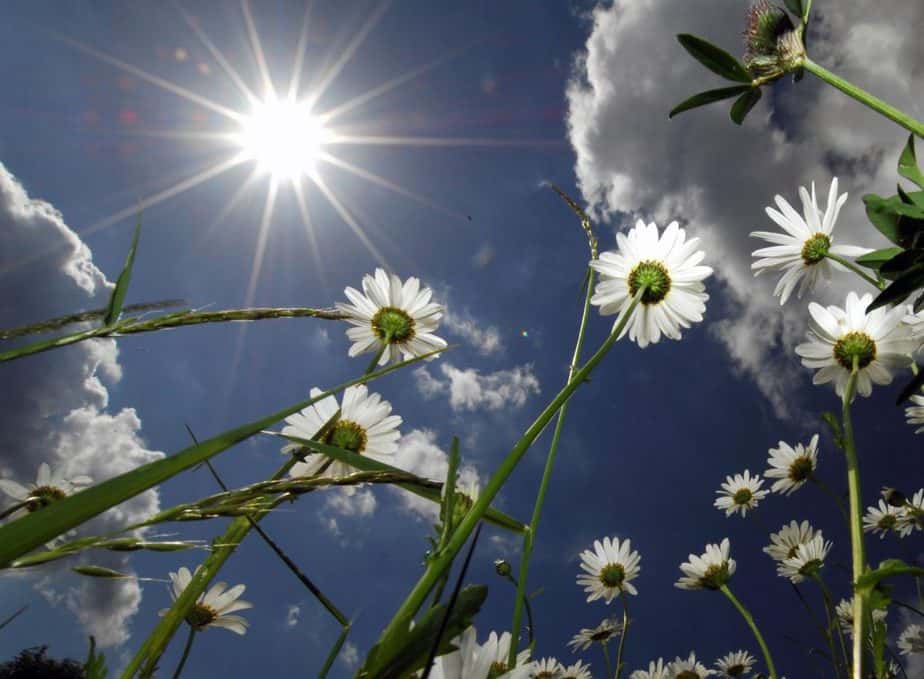
So, as we just learned, all greenhouses, solar or not, use the sun’s energy to help plants thrive in cold weather. The basic principle is the same for both solar greenhouses and normal ones.
The biggest differences are that a solar greenhouse:
- Is precisely aligned to capture as much as possible of the sun’s heat.
- Captures and converts the sun’s energy (into electricity) with solar panels.
- Enables you to store that converted energy for use in the greenhouse or elsewhere.
In a solar-powered greenhouse, warm-weather plants are protected during intense cold of winter nights with just the sun’s energy. A solar greenhouse requires less artificial heating than a normal greenhouse in those cold times because of its special design. The artificial heating it does use comes through renewable, net-zero energy.
Fully solar-powered greenhouses provide a reliable, off-the-grid power source for adventurous homesteaders, for those who live in an area with frequent power outages, or simply want to cut down on a hefty power bill.
Whatever sparks your desire for energy independence, adding solar-panel power to your greenhouse operation is a significant step toward a clean-energy household.
Passive Solar vs. Solar-Powered Greenhouse
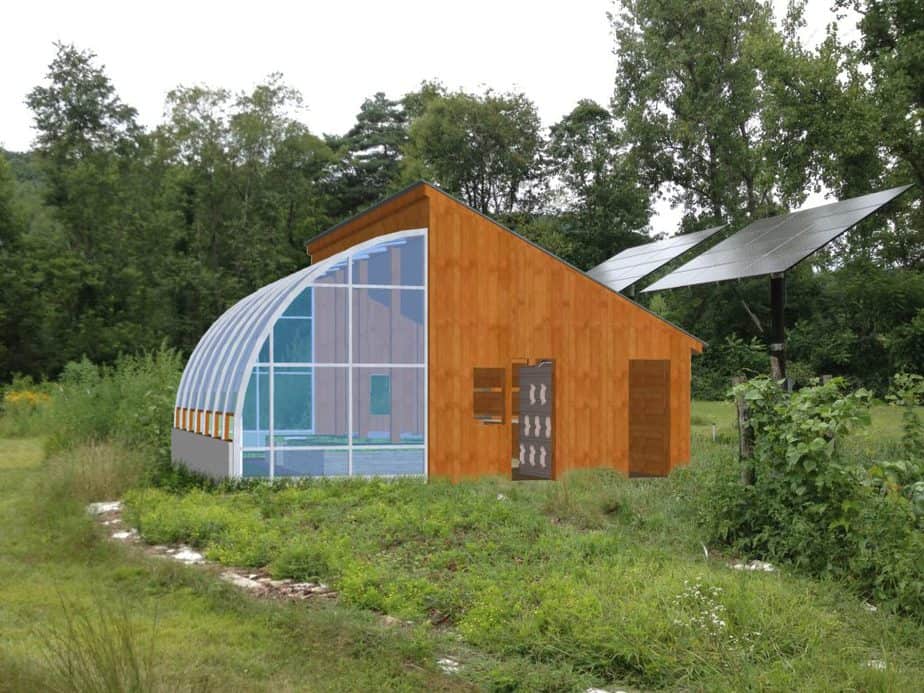
Technically, yes, all greenhouses are solar-powered. But since the invention and popularization of solar panels that use photovoltaic cells, the world started to clarify between passive solar design and solar-powered electric (photovoltaic or PV) design.
Passive solar design refers to using precise building principles that maximize energy gain and minimize heat loss. A solar-powered PV greenhouse produces electricity to power electric equipment in the greenhouse-like fans, pumps, and lights.
Getting Started – Solar for Greenhouses
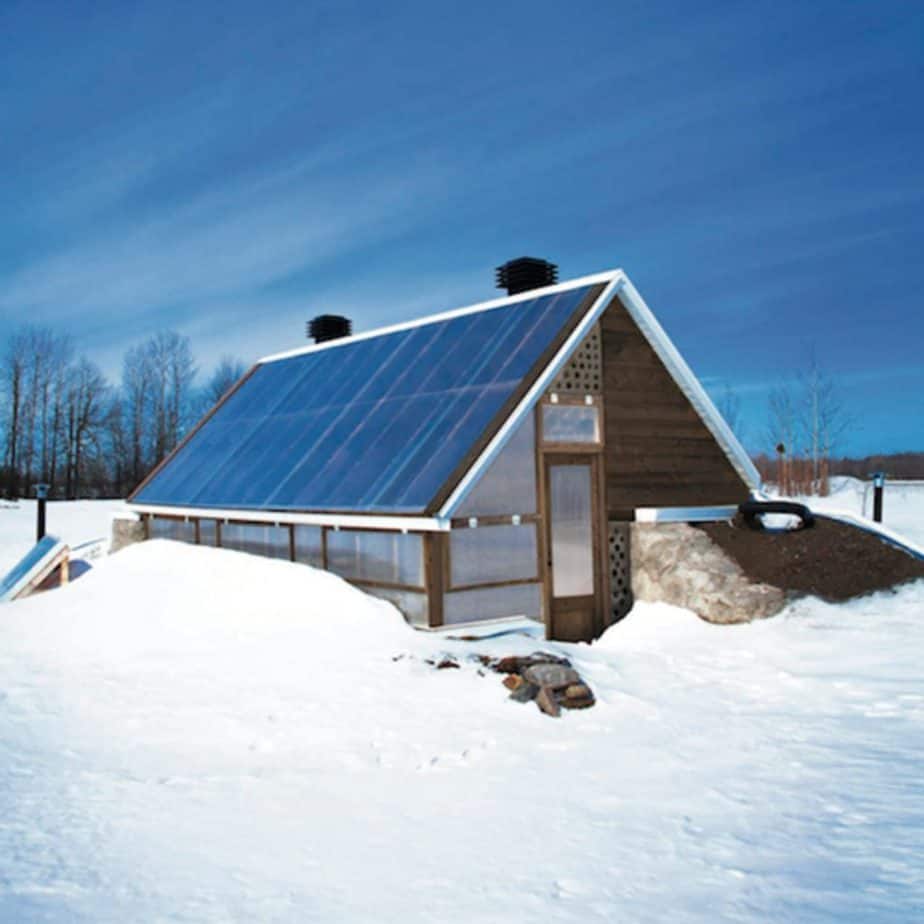
Setting up a solar greenhouse takes keen attention that setting up a traditional greenhouse doesn’t. If you already have a regular greenhouse, you may be able to convert it to a solar-powered operation if you initially set up your greenhouse wisely.
Here are the basics to start envisioning your solar dream-greenhouse. The first few are relevant even for non-solar greenhouses.
Orientation Toward The Sun
The first step to harnessing the sun’s power is plain geometry. A solar greenhouse needs to be oriented toward the south (in the Northern Hemisphere, that is; it should face the north in the Southern Hemisphere). This will allow the greenhouse to receive maximum exposure to the sun’s rays as it crosses the sky.
Insulation for Greenhouses

Just like orientation, insulation is extra-important for a solar greenhouse because the whole object minimizing any wasted energy.
To insulate best, the north wall of your greenhouse should be made of heat-absorbing material like concrete or stone painted black. This will help retain heat. Additionally, insulate the east and west walls moderately well with something as simple as clear vinyl sheeting (so the sun’s rays can still get in) or a fancier reflective sheeting.
You will want to insulate underground as well. This gets a little more complicated and pricey but is totally worth it! By insulating the area underneath your greenhouse—not the greenhouse floor itself, but all the earth beneath the structure—you’ll not only prevent heat loss through the floor, but also create a big, warm energy store underneath the greenhouse.
Ventilation in Greenhouses
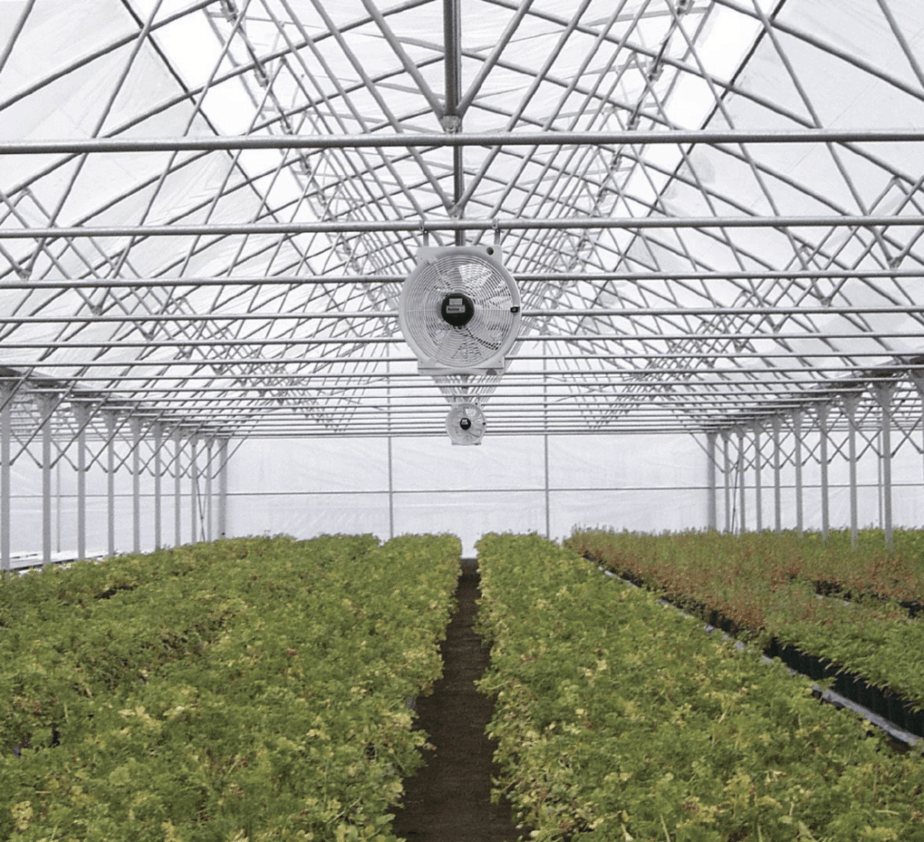
Your greenhouse needs to breathe! Ventilation is crucial to your plants health, cooling down your greenhouse, preventing condensation, and minimizing pests and diseases. The most sustainable natural ventilation system is a combination of low-set vents and high-up exhaust vents. In a solar-powered greenhouse, though, you can use some of that electricity to power exhaust fans.
Want more information on the different types of greenhouse fans? Find the best option for you, here.
Thermal Mass in Greenhouses
Thermal mass is a technique of storing heat energy in certain materials within the greenhouse. Most commonly used are water, stone, concrete, and cob. Installing thermal mass can be as simple as placing drums of water in your greenhouse. It’s an essential practice for all greenhouses, but especially important in solar-electricity greenhouses.
Solar Panels for Greenhouses

Solar panels convert the sun’s energy into electric current in their photovoltaic (PV) cells. They work on sunny and cloudy days. Simple enough—but with greenhouse maintenance, there are few extra details to consider.
Solar Panel Placement
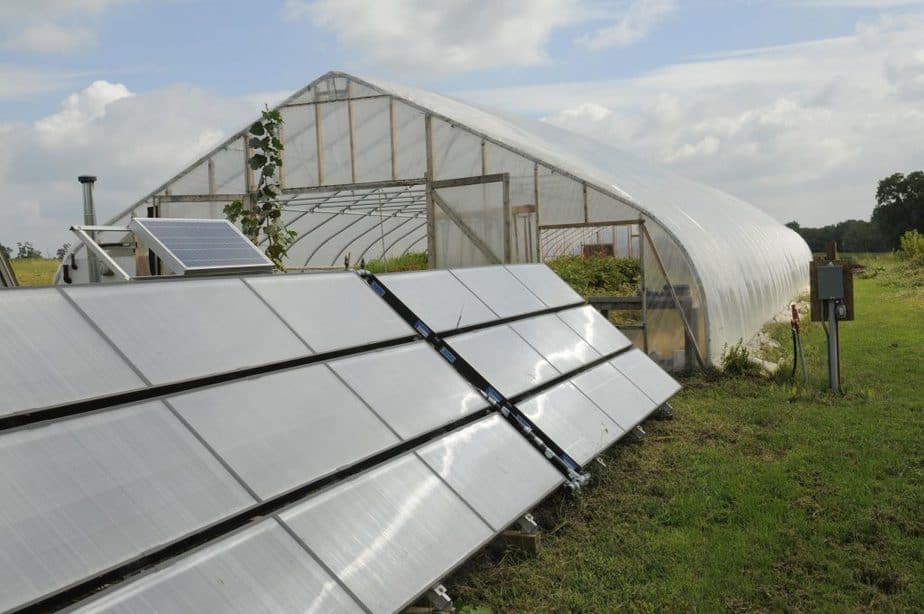
As you can imagine, placing a big, opaque object on top of your sun-loving greenhouse isn’t the wisest choice.
You want to place the solar panels somewhere other than the top of your greenhouse: maybe next to it, or even on top of your home. Your greenhouse needs to be quite large in order to hold enough panels to be worthwhile.
But if you’re in for slightly science-fiction endeavors, this is where things get really fun.
A Santa Cruz, California-based company, Soliculture, developed an incredible panel that uses a light-sensitive dye that lets light through and helps plants photosynthesize. The panels convert light into a wavelength that’s ideal for photosynthesis while still gleaning energy for electricity.
Evaluate Your Electricity Demand
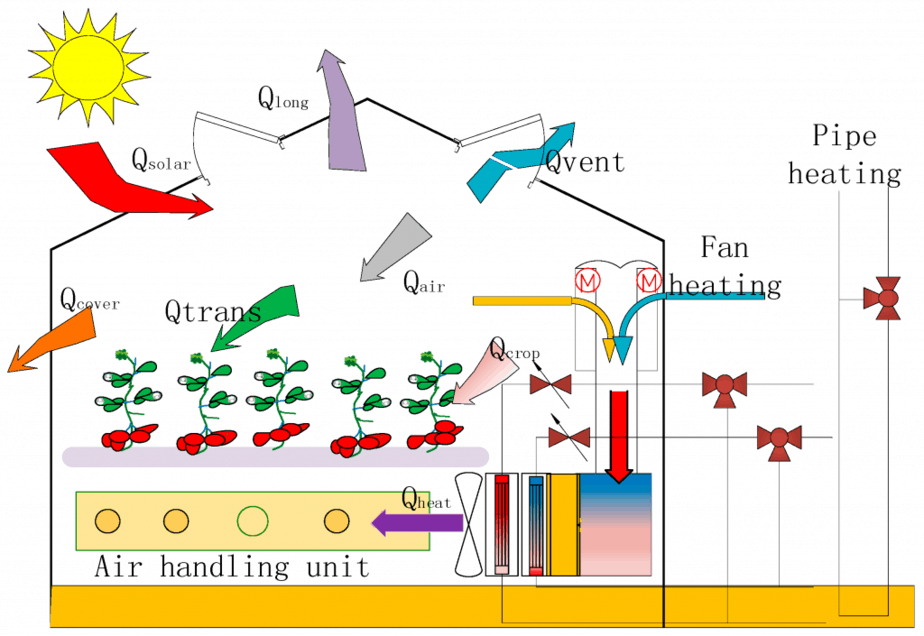
How much power will you need?
Consider your greenhouse set-up and what kind of equipment you’ll need. This largely depends on how big your greenhouse is plus what the climate where you live.
If you have very harsh, cold winters, you might need to harvest and store more PV power. If you’ll need lots of ventilation in hotter seasons, more fans will require additional power.
It’s worth noting, aquaponics and other sensitive systems require more electricity, too.
Solar Panel Batteries for Greenhouses
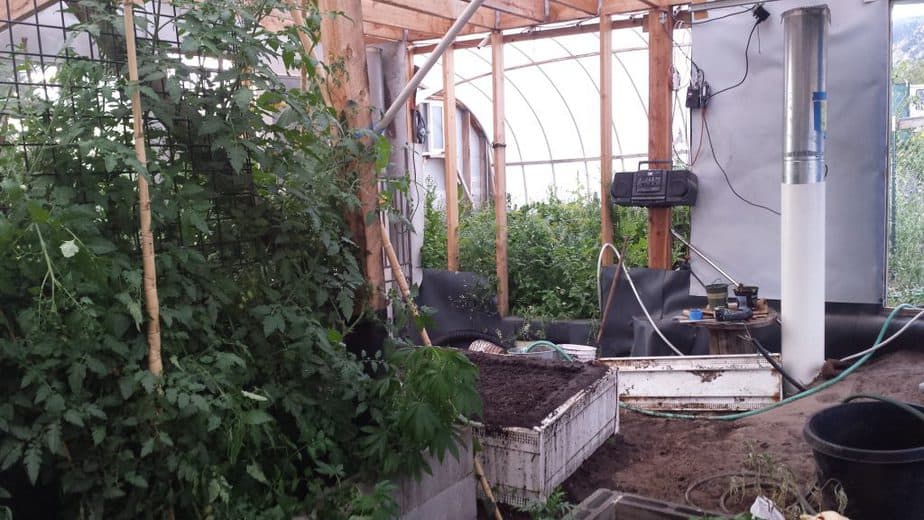
Your panels are collecting the sun’s energy, your greenhouse is heating up from the sun’s rays—great! But where is all that energy going? You need a battery!
Electrical Batteries
There are an array of electricity-storing batteries on the market. Your particular choice will be determined both by what kind of solar panels you choose and how much energy you’re harvest and storing.
Thermal Batteries
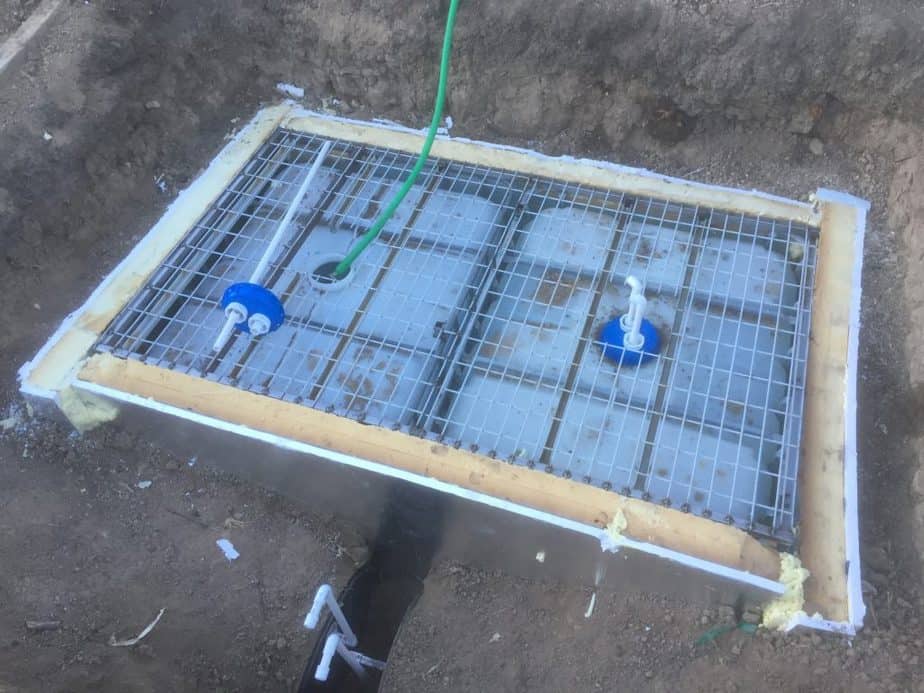
But consider using a “thermal battery” for your solar greenhouse. Just as a regular battery stores and distributes electrical energy, a thermal battery stores heat. This is a little bit of a trick because thermal batteries are technically just thermal mass (see above)—but with the optional addition of an extra heating device, powered by your solar power harvesting.
For example, the drums of water sitting in a passively powered greenhouse serving as thermal mass heat storage might be lined with copper coils. Another option is a cute powered heat-wrap “jacket” like this one.
A top-notch greenhouse design incorporation subterranean insulation with a below-ground thermal battery, whether that’s made of soil, water, concrete, or even wax.
Powering Other Devices
Your imagination is the limit with what you can power with the sun’s energy! How about a solar-powered exhaust fan to ventilate your greenhouse?
Maybe some full-spectrum LED lights to give your tropical plants a boost? Perhaps you’d like to relax in a luxurious zero-gravity, full-body Shiatsu massage chair while watching your plants grow?
Hey, it’s renewable! The sky’s the limit—well, more like the sun is the limit.
Patrick is a professional copywriter and a published ecologist. He spends too much time trying to ID weeds and the rest of it trying to manage his quickly expanding succulent collection.

